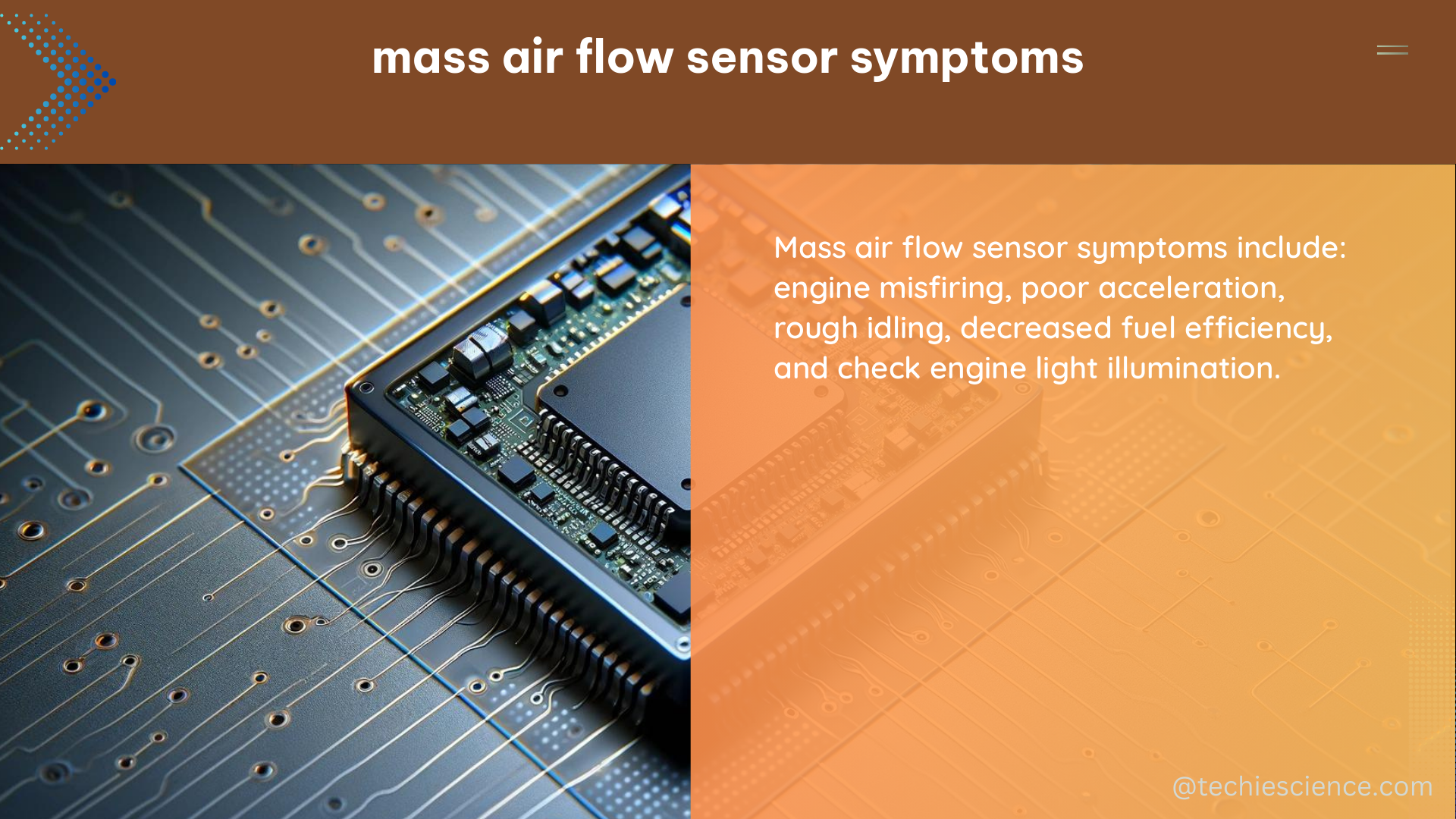The mass air flow (MAF) sensor is a critical component in your vehicle’s engine management system, responsible for measuring the amount of air entering the engine. When this sensor malfunctions, it can lead to a variety of drivability issues, fuel efficiency problems, and even the illumination of the check engine light. In this comprehensive guide, we’ll delve into the common symptoms of a failing MAF sensor, its technical specifications, and a step-by-step DIY guide for testing the sensor.
Common Symptoms of a Failing MAF Sensor
-
Poor Drivability: A faulty MAF sensor can cause your vehicle to experience poor drivability, such as engine stalling, jerking, or hesitation during acceleration. This can create dangerous situations and increase the risk of accidents.
-
Air-Fuel Ratio Issues: When the MAF sensor is not functioning correctly, it can cause your vehicle to run either too rich (excessive fuel) or too lean (insufficient fuel). This can result in black smoke from the tailpipe, rough engine operation, and backfiring. You may also notice an increase in fuel consumption.
-
Incorrect Sensor Readings: The MAF sensor measures the amount of air entering the engine in grams per second. If the sensor is damaged or its wires are coated with dirt, it may not be able to accurately measure the airflow. This can lead to the powertrain control module (PCM) receiving incorrect information, causing it to release too much or too little fuel.
-
Check Engine Light Illumination: When the MAF sensor is not working correctly, it can trigger the check engine light on your dashboard. You can use an OBDII code reader to retrieve the diagnostic trouble codes related to the MAF sensor.
Technical Specifications of a MAF Sensor

-
Location: The MAF sensor is typically located between the air filter and the throttle body, responsible for measuring the amount of air entering the engine.
-
Sensor Types: Most modern vehicles are equipped with a hot-wire MAF sensor, which has one heated wire and one ambient temperature wire. The sensor’s microprocessor maintains the temperature of the hot wire 200°F above the incoming air temperature, and the energy required to do so is calculated and sent to the PCM.
-
Measurement: The MAF sensor measures the amount of air entering the engine in grams per second (g/s). This data is crucial for the PCM to determine the appropriate fuel injection and ignition timing.
-
Sensor Voltage Range: The output voltage of a MAF sensor can range from 0 to 5 volts, with the voltage increasing as the airflow increases. A healthy MAF sensor should have a voltage output that corresponds to the engine’s RPM and load.
-
Sensor Resistance: The resistance of a MAF sensor can vary depending on the specific model, but it typically ranges from 1 to 10 ohms. A significant deviation from this range may indicate a problem with the sensor.
DIY Guide for Testing a MAF Sensor
- Scan Tool Diagnosis: You can use a low-cost OBDII scan tool to test the MAF sensor. Here’s how:
- Access the Live Data or Data Stream function on your scan tool.
- Locate the MAF Sensor data, which should be displayed in grams per second (g/s).
- With the engine off, the g/s reading should be relatively low, typically less than 2 g/s.
-
Start the engine and observe the g/s reading. As you increase the engine RPM, the g/s reading should also increase proportionally.
-
Voltage Output Test: You can also test the MAF sensor’s voltage output using a multimeter:
- Locate the MAF sensor in your vehicle and identify the signal wire.
- Connect the positive lead of your multimeter to the signal wire and the negative lead to a ground point.
-
Start the engine and observe the voltage reading. It should range from 0 to 5 volts, increasing as the engine RPM and airflow increase.
-
Resistance Test: To check the sensor’s resistance, use a multimeter:
- Locate the MAF sensor and identify the two sensor wires.
- Set your multimeter to the resistance (ohm) setting.
- Connect the multimeter leads to the two sensor wires.
- The resistance should typically fall within the range of 1 to 10 ohms.
Remember, it’s always best to consult your vehicle’s service manual or a professional mechanic for specific testing procedures and specifications for your make and model.
References
- Symptoms of a Failing Mass Air Flow Sensor
- Mass Air Flow Sensor Circuit Low
- How to Test a Mass Air Flow (MAF) Sensor
- Diagnosing a Bad Mass Air Flow (MAF) Sensor
- Bad MAF Sensor Symptoms

The lambdageeks.com Core SME Team is a group of experienced subject matter experts from diverse scientific and technical fields including Physics, Chemistry, Technology,Electronics & Electrical Engineering, Automotive, Mechanical Engineering. Our team collaborates to create high-quality, well-researched articles on a wide range of science and technology topics for the lambdageeks.com website.
All Our Senior SME are having more than 7 Years of experience in the respective fields . They are either Working Industry Professionals or assocaited With different Universities. Refer Our Authors Page to get to know About our Core SMEs.